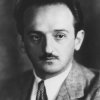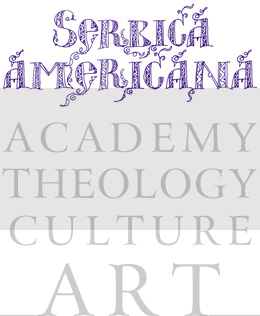Slavoljub Vorkapić was born on March 17, 1894, in the small village of Dobrinci near Ruma in the Syrmia region, at the time part of the Kingdom of Croatia and Slavonia of the Austro-Hungarian Empire (now Serbia). His father Petar, the town clerk, insisted that young Slavko should be well-educated.
.After finishing his primary education, he became a student in a well-known regional high-school in the nearby town of Sremska Mitrovica, where he made his first steps in art and drawing. He continued his high-school education in Zemun and later in the famous Art School in Belgrade. With a scholarship received from Matica srpska, Serbia's highest cultural and scientific institution at the time, Vorkapić went to Budapest, Hungary, where he studied art. At the beginning of World War I he immediately returned to his homeland where, with the country besieged on all sides, he survived the tragic Serbian retreat across Albania in order to reach Allied positions in Greece. From there he sailed to Italy, from where he reached France. He managed to enter Art Academy in Paris but soon after moved to Montparnasse among other Avant-garde artists. He took part in the 1917 and 1919 collective painter exhibits.
Slavko Vorkapić's dream to go to the United States was fulfilled in 1920. For a short time, he lived in New York City. Then, for almost a year, he roamed the country nearly homeless, until his arrival in Hollywood in July 1921. Although he started his film career as a painter and an actor, he became best known as a special effects expert, film artist, film teacher, director, editor and became one of the most respected filmmakers in the period between the two World Wars. Vorkapić made a great number of documentaries and experimental films.
Vorkapić co-directed the experimental short film The Life and Death of 9413: a Hollywood Extra (1928) with Robert Florey, and Moods of the Sea (1941) and Forest Murmurs (1947) with filmmaker John Hoffman (1904–1980).
He is best known for his montage work (see montage sequence) on Hollywood films such as Viva Villa (1934), David Copperfield (1935), San Francisco (1936), The Good Earth (1937), and Mr. Smith Goes to Washington (1939). In October 2005, the DVD collection Unseen Cinema: Early American Avant Garde Film 1894-1941 was released and included a one-minute montage sequence Vorkapich did for the otherwise lost film Manhattan Cocktail (1928), directed by Dorothy Arzner.
The now-common montage sequence often appeared as notation in Hollywood scripts of the 1930s and 40s as the "vorkapich" because of his mastery of the dynamic visual montage sequence wherein time and space are compressed using a variety of editing techniques and camera moves. Vorkapich used kinetic editing, lap dissolves, tracking shots, creative graphics and optical effects for his stunning montage sequences for such features as Meet John Doe, Maytime, Crime Without Passion, Manhattan Melodrama, and Firefly. He created, shot, and edited these kinesthetic montages for features at Universal Studios (then known as Universal Pictures), MGM, RKO, and Paramount.
His protege, Art Clokey, learned kinescope animation techniques under him and went on to create the Gumby animated series.
He was appointed chair of the Department of Film of the University of Southern California from 1949-1951.
In 1938 Vorkapich commissioned modern architect Gregory Ain to build a garden house for his Beverly Hills residence. It was a minor landmark in prefabricated architecture. It has since been destroyed.
During the 1950s he was in Yugoslavia and worked as a professor at the Belgrade Film and Theatre Academy. In Yugoslavia in 1955 Vorkapić made his last full-length movie Hanka.
Slavko Vorkapić died of a heart attack in Mijas, Spain, on the estate of his son on October 20, 1976.
Two of his many master drawings, his gift during a visit to Yugoslavia, are kept in the Syrmia Museum in Sremska Mitrovica. Recent reports say that his descendants are ready to fulfill Vorkapić’s last will and testament to donate the same museum with all of his remaining art drawings.
Sources
- The Most typical Avant-Garde James, David - 2005
- On True Cinema, Babac, Marko - 1998
- Slavko Vorkapich: Reminiscences - Davis, Ronald - 1978
From Wikipedia






